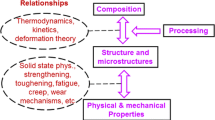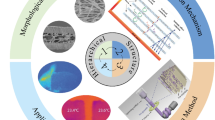Abstract
The isobaric heat capacities of solid explosive materials were measured using differential scanning calorimeter. The values of C p were determined at temperature 298.15 K and compared to theoretical data calculated using the group additivity approach. Several group contribution methods were tested, showing that certain method for some explosives provides estimation of C p with error only 1 %. Generally, the average error limit for calculated C p was about 11 %, which is insufficient.



Similar content being viewed by others
References
Boileau J, Fauquignon C, Hueber B, Meyer HH. Explosives. In: Ullmann´s, editor. Encyclopedia of industrial chemistry. England: John Wiley and Sons; 2009.
Dobratz BM. LLNL explosives handbook. UCRL Report 52 997. Change 2. Livermore: ISEE EXPLOSIVES ENGINEERS; 1985.
Bohn MA, Volk F. Adiabatische Selbstaufheizung bei Treib-und Explosivstoffen. 24th Annual Conference of ICT, Karlsruhe; Jun 1993.
Accelerating rate calorimeter—ARC technical information note 005, temperature of no return: Application of ARC data maximum safe temperatures and pack sizes. Technical manual, THT.
Fischer HG, Goezt DD. Determination of self-accelerating decomposition temperatures using the Accelerating Rate Calorimeter. J Loss Prev Process Ind. 1991;4:95–9.
Pilař R, Honcová P, Koštál P, Sádovská G, Svoboda L. Modified stepwise method for determining heat capacity by DSC. J Therm Anal Calorim. 2014;118:485–91.
Mraw SC, Naas DF. Measurement of accurate heat-capacities by differential scanning calorimetry. Comparison of d.s.c. results on pyrite (100 to 800 K) with literature values from precision adiabatic calorimetry. J Chem Termodyn. 1979;11:567–84.
Application note M149-v1, Setaram.
Meyer R, Kohler J, Homburg A. Explosive. 5th ed. Wiley: Weinheim; 2002.
Baytos JF. Informal report LA-8034-MS, UC-45. Los Alamos Scientific Laboratory: University of California; 1979.
Haishan D, Fenfen Z. Performance of high explosives and their related materials. Beijing: Science Press; 1989.
Tran TD, Simpson RL, Maienschein J, Tarver C. U.S. Department of Energy. Karlsruhe, Germany; 3–6 Jul 2001.
Rylance J, Stubley D. Heat capacities and phase transitions of octahydro-1,3,5,7-tetranitro-1,3,5,7-tetrazocine (HMX). Thermochim Acta. 1975;13:253–9.
Licht HH, Hansson J. HMX (octogen) and its polymorphic forms. In: Symposium on chemistry problems with the stability of explosives. 1971. 3. p. 168–79.
Lyman JL, Liau YC, Brand HV. Thermochemical functions for gas-phase, 1,3,5,7-tetranitro-1,3,5,7-tetraazacyclooctane (HMX), its condensed phases, and its larger reaction products. Combust Flame. 2002;130:185–203.
Xu K, Song J, Zhao F, Ma H, Gao H, Chang C, Ren Y, Hu R. Thermal behaviour, specific heat capacity and adiabatic time-to-explosion of G(FOX-7). J Hazard Mater. 2008;158:333–9.
Zhaona L, Haixia M, Jirong S, Fengqi Z, Kangzhen X, Rongzu H. Specific heat capacity, thermodynamic properties and adiabatic time-to- explosion of 3-nitro-1,2,4-triazol-5-one (NTO). Huozhayao Xuebao. 2008;31:25–8.
Dorofeeva OV, Tolmach PI. Estimation of the thermodynamic properties of nitroguanidine, hexahydro-1,3,5-trinitro-1,3,5-triazine and octahydro-1,3,5,7-tetranitro-1,3,5,7-tetrazocine in the gas phase. Termochim Acta. 1994;240:47–66.
Fulem M, Laštovka V, Straka M, Růžička K, Shaw JM. Heat capacities of tetracene and pentacene. J Chem Eng Data. 2008;53:2175–81.
Sallamie N, Shaw JM. Heat capacity prediction for polynuclear aromatic solids using vibration spectra. Fluid Ph Equilib. 2005;237:100–10.
Wunderlich B. Thermal analysis of polymeric materials. Heidelberg: Springer; 2005. p. 101–44.
Domalski ES, Hearing ED. Estimation of the thermodynamic properties of hydrocarbons at 298.15 K. J Phys Chem Ref Data. 1988;17:1637–78.
Hurst JE, Harrison BK. Estimation of liquid and solid heat capacities using a modified Kopp’s rule. Chem Eng Commun. 1992;112:21–30.
Rihani DN, Doraiswamy LK. Estimation of heat capacity of organic compounds from group contributions. Ind Eng Chem Fundam. 1965;4:17–21.
van Krevelen DW, te Nijenhuis K. Properties of polymers, their correlation with chemical structure; their numerical estimation and prediction from additive group contributions. 4th ed. Amsterdam: Elsevier; 2009.
Satoh S. Heat capacity and chemical constitution. J Sci Res Inst (Tokyo). 1948;43:61–93.
Chickos JS, Hesse DG, Liebman JF. A group additivity approach for the estimation of heat capacities of organic liquids and solids at 298 K. Struct Chem. 1993;4:261–9.
Goodman BT, Wilding WV, Oscarson JL, Rowley RL. Use of the DIPPR database for development of quantitative structure—Property relationship correlations: heat capacity of solid organic compounds. J Chem Eng Data. 2004;49:24–31.
Acknowledgements
This work was done under the financial support of Ministry of Interior of the Czech Republic, project no. VG20102014032. Authors thanks to Monika Subrtova for her help with DTA measurements.
Author information
Authors and Affiliations
Corresponding author
Rights and permissions
About this article
Cite this article
Pilar, R., Pachman, J., Matyáš, R. et al. Comparison of heat capacity of solid explosives by DSC and group contribution methods. J Therm Anal Calorim 121, 683–689 (2015). https://doi.org/10.1007/s10973-015-4611-3
Received:
Accepted:
Published:
Issue Date:
DOI: https://doi.org/10.1007/s10973-015-4611-3




